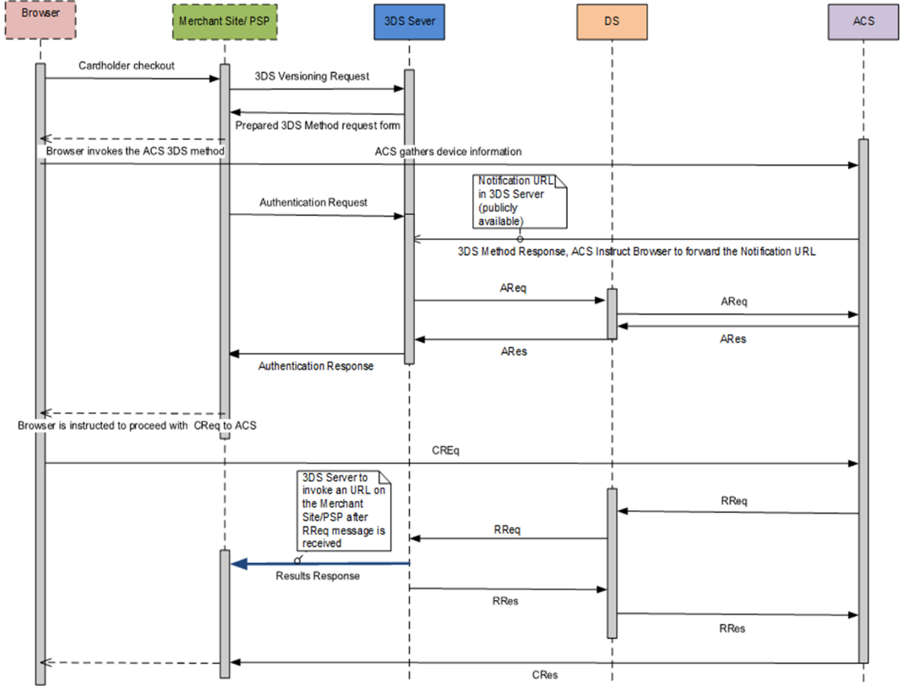


The 3DS Versioning Method provides information about the ACS and DS supported protocols and the 3DS Method URL, if existing. When the device channel is Browser, the 3DS Versioning Method needs to be invoked before the authentication request.
The 3DS Server will:
If the supported protocol version is 2.0, the obtained threeDSServerTransID should be sent in the following authentication request.
3DS versioning data could also be requested without further initiating an authentication request.
For details about the 3DS Versioning request/response models and samples, refer to 3DS Versioning .
When a 3DS Authentication is initiated, the 3DS Server will:
For Browser channel, when initiating authentication request, use threeDSServerTransID from previously invoked 3DS versioning.
Once a response from the DS is received, the 3DS Server will:
For details about the 3DS Authentication request/response models and samples, refer to 3DS Authentication.
The 3DS Server provides an endpoint for a notification about a challenge cancellation in case the challenge was requested in the authentication response, but there was a decision from the 3DS Requestor to opt out of the challenge.
In order to notify the 3DS Server about a challenge cancelled for a specific transaction, post the 3DS Server Transaction ID to the challenge-cancelled endpoint.
For details about the challenge cancelled request sample, refer to Challenge cancelled.
The Results Request (RReq) Message contains information of the result of the authentication. The message is sent by the ACS through the DS to the 3DS Server. There is only one Results Request message per authentication. This message is present only when the authentication requires Cardholder challenge.
As a response the 3DS Server creates a Results Response (RRes) message and sends it to the DS. Additionally, the 3DS Server sends ThreeDSServerResultsResponse message to the Requestor via the ResultsResponseNotificationUrl.
When a RReq message is received from the DS, the 3DS Server will:
For details about the 3DS Results data sent from the 3DS Server to the Requestor, refer to 3DS Results.
The final Challenge Response (CRes) Message contains information of the result of the challenge flow. The final Challenge Response message is sent from the ACS to the Requestor environment via an HTTP POST through the browser to the Notification URL that was sent in the initial AReq message. The final Challenge Response Message is present only for BROWSER flow when the Challenge cycle is finished. This message is a base64-encoded string.
The 3DS Server does not send a response to the ACS since the ACS does not expect a response. The 3DS Server creates a ThreeDSServerChallengeResponse message to the Requestor via the ChallengeResponseNotificationUrl.
When a CRes message is received from the ACS, the 3DS Server will:
NOTE: If the 3DS Server handles the final CRes message, it does not return any response to the browser. If the browser expects a response to the message sent to the Notification URL, then it is recommended for the Requestor to handle the final CRes.
For details about the 3DS Challenge data sent from the 3DS Server to the Requestor, refer to 3DS Challenge.